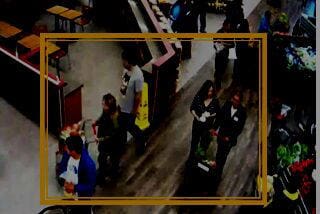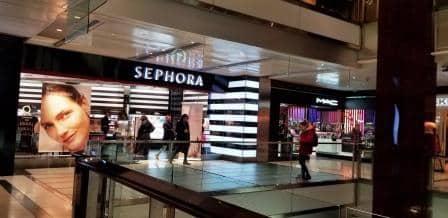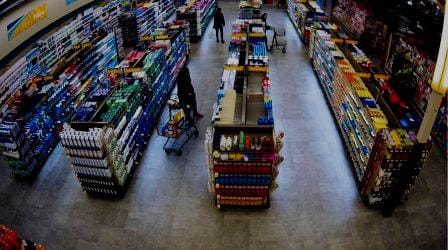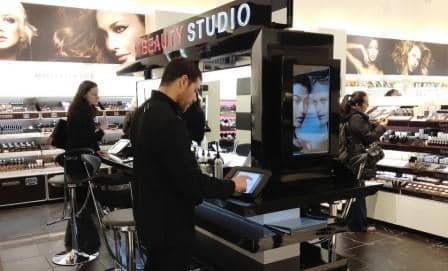Heuristic Evaluation is the first step for In-Store Optimization.
Here’s the definition from Wikipedia:
“Heuristics are strategies derived from previous experiences to solve similar problems.”
And,
“A heuristic technique, or a heuristic, is any approach to problem solving or self-discovery that employs a practical method that is not guaranteed to be optimal, perfect, or rational, but is nevertheless sufficient for reaching an immediate, short-term goal or approximation.”
In online digital marketing, heuristic evaluation means learning about the website.
In practice, it means following up on the website customer’s journey like a typical visitor, but with an expert’s eyes.
In other words, heuristics evaluation is a walkabout in the wilderness with Crocodile Dundee.
Heuristic Evaluation Framework for In-Store Conversion Optimization
I’ll start with an observation:
While heuristics is a well-developed discipline in online digital marketing, the formal structure does not exist in physical retail.
Yes, store site surveys exist.
Yes, customer surveys exist.
No, I’m not aware of a framework for observing customer behaviors in a physical store.
The online heuristic evaluation aims to identify user personas, buying phases, anxiety factors, friction in forms and funnel, and technical aspects related to devices and platforms.
To me, In-Store Heuristic Evaluation is about customer behaviors.
I start by paying attention to how customers behave in the store.
My goal is to quantify the customer’s experience.
The trick is identifying what ignites impact.
I have three behaviors that require investigation:
In-Store Heuristic Evaluation Example #1: Clarity
Clarity contains the seeds of digital marketing definition of awareness. And yet, by entering a physical store, the visitor is already aware of the store.
Therefore, in physical stores, clarity can be referenced to retail branding, product categories, or specific items.
Here are examples:
Branding: do visitors know the store? If you have a cosmetics store in a shopping center, and three other cosmetics stores are close by, your shoppers likely know your brand. Most importantly, there have a well-defined set of expectations about the store.
Category: does the product positioning reflect customer expectations? If you’re selling water bottles in your convenience store, shoppers look for the bottles in the aisle and the refrigerator. Still, an impulse buy comes from positioning the bottles next to the cashier.
Product: do shoppers act if they are searching for something? If you’re in a supermarket, watch for customer behaviors in the aisle next to the pharmacy. And if you’re in a home supplies store, head over to the plumbing and steel nails aisle.
It’s important to remember –
Clarity can be hijacked by bias because what feels clear to me may not be clear to you.
Once you mapped the areas of interest, the next step is to track how shoppers engage with the store, staff, and products.
In-Store Heuristic Evaluation Example #2: Motivation
The more you know about your target customer (marketing personas), the more valuable is the heuristics evaluation.
Motivation is the process of defining the customer’s intent to buy.
Here are examples:
Placement: Is product placement effective? For example, a coffee display will not work well in the high-traffic meat aisle, but it will attract shoppers next to the deli
Background: What happens in the local environment that may impact the customer’s motivation to buy? For example, playing Christmas music increases holiday sales.
Engagement: What customer engagement signals tell us about the motivation to buy? For example, if customers stand in the organic food aisle for more than three minutes, how that data help to improve the display.
It’s important to remember –
There is a difference between asking customers what they want and watching what they do while shopping.
In-Store Heuristic Evaluation Example #3: Buying
The buying behavior refers to when a shopper is ready to spend money.
Online sales funnels are linear. You can measure the conversions as shoppers move from one page to another. That does not happen in real life.
Therefore, once a customer found the product and engaged with the product, what will impact the sales funnel from Purchase Point to Payment?
Here are examples:
Try Before Buy: For example, what’s the impact of mirrors in apparel stores. That is especially pertinent if the retailer evaluates Smart Mirrors. When it comes to sales, sometimes the simple mirror could be more effective than any digital gadget.
Checkout Behaviors: A common and well-known challenge is the checkout process, but I search for behaviors. For example, what’s the difference in actions between shoppers who use self-service kiosks and those who stand in line for cashiers?
Repeated Purchase: For example, take product packaging. If the brand changed the packaging of yogurt but did not change the product, how does it impact the Purchase Point?
It’s important to remember –
The negative aspects of shopping, such as friction, anxiety, and security, play an outsized role in the later phases of the in-store sale funnel.
Sometimes, the solutions are simple and don’t require technology. For example, when an ATM line distorted the Field of View and prevented customers from entering the bank branch, all they did was add a rope, and the line formed along the wall.
To be clear:
Heuristic Evaluation does not include data.
It’s about expertise.
It’s about judgment.
Most importantly, the objective is to create the initial list of what works or not, what we should test, and the priority.
Once you have a list, you can design the test hypothesis. And from that moment forward, the process is no longer about ‘opinions,’ but about gathering and analyzing data.
One last word –
To avoid the Confirmation Bias during the audit, use an expert, build competitive benchmarks for other stores, and don’t stop the optimization tests too early before you have valid results. Heuristics done correctly is a shortcut.
The walkabout of customer behaviors is the job of Heuristic Evaluation.



